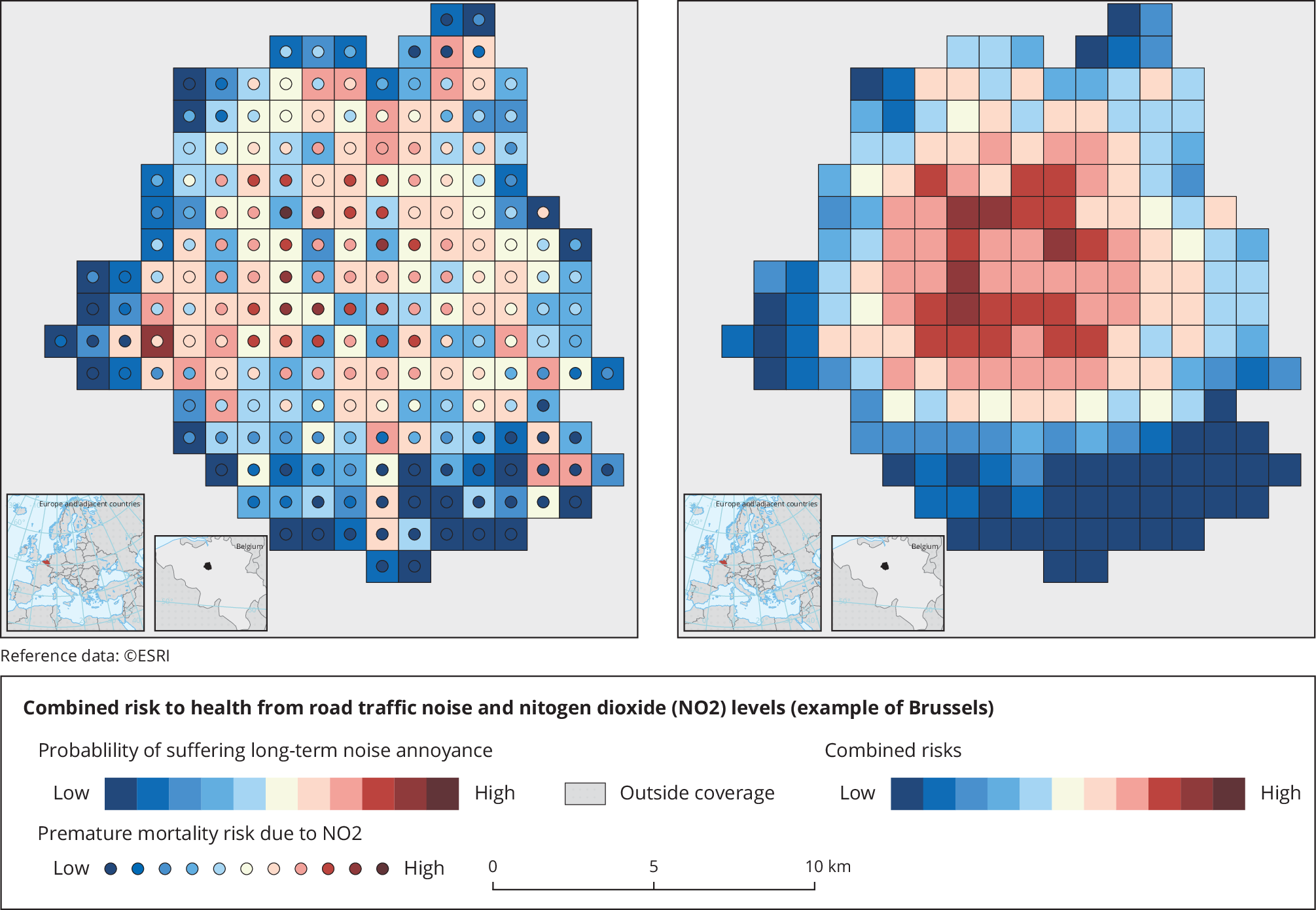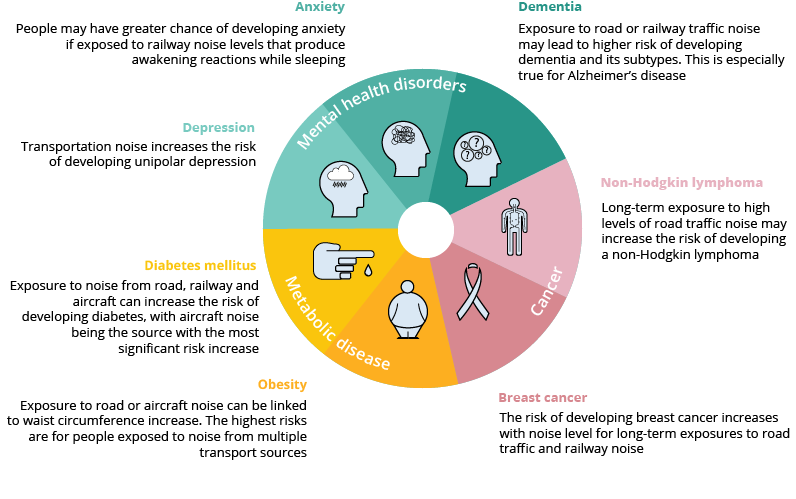Cantuaria, M. L., et al., 2021, ‘Residential exposure to transportation noise in Denmark and incidence of dementia: national cohort study’, BMJ374, n1954 (https://doi.org/10.1136/bmj.n1954).
Hegewald, J., et al., 2020, ‘Traffic noise and mental health: a systematic review and meta-analysis’, International Journal for Environmental Research and Public Health 17(17), 6175 (https://doi.org/10.3390/ijerph17176175).
Pyko, A., et al., 2017, ‘Long-term exposure to transportation noise in relation to development of obesity — a cohort study’, Environmental Health Perspective125 (11), 117005 (https://doi.org/10.1289/EHP1910).
Roswall N., et al., 2021, ‘Long-term exposure to transportation noise and risk of incident stroke: a pooled study of nine Scandinavian cohorts’, Environmental Health Perspective 129(10), 107002 (https://doi.org/10.1289/ehp8949).
Seidler, A., et al., forthcoming, Einfluss des Lärms auf psychische Erkrankungen des Menschen, Umweltbundesamt, Dessau-Roßlau (in press).
Sørensen, M., et al., 2021, ‘Road and railway noise and risk for breast cancer: a nationwide study covering Denmark’, Environmental Research 195, 110739 https://doi.org/10.1016/j.envres.2021.110739).
Sørensen, M., et al., 2015, ‘Residential exposure to traffic noise and risk for non-hodgkin lymphoma among adults’, Environmental Research 142, pp. 61-65 (https://doi.org/10.1016/j.envres.2015.06.016).
Thacher, J. D., 2022, ‘Exposure to transportation noise and risk for cardiovascular disease in a nationwide cohort study from Denmark’, Environmental Research, 211, 113106 (https://doi.org/10.1016/j.envres.2022.113106).
Zare Sakhvidi, M., et al., 2018, ‘Association between noise exposure and diabetes: a systematic review and meta-analysis’, Environmental Research 166, pp. 647-657 (https://doi.org/10.1016/j.envres.2018.05.011).


Document Actions
Share with others